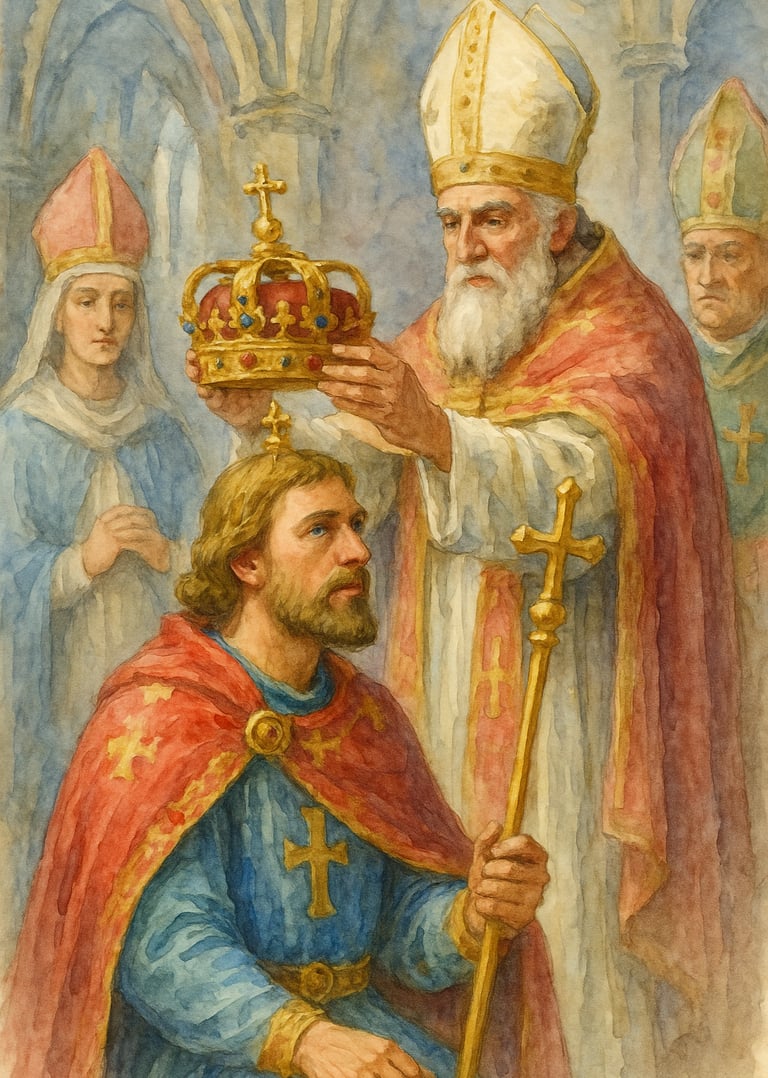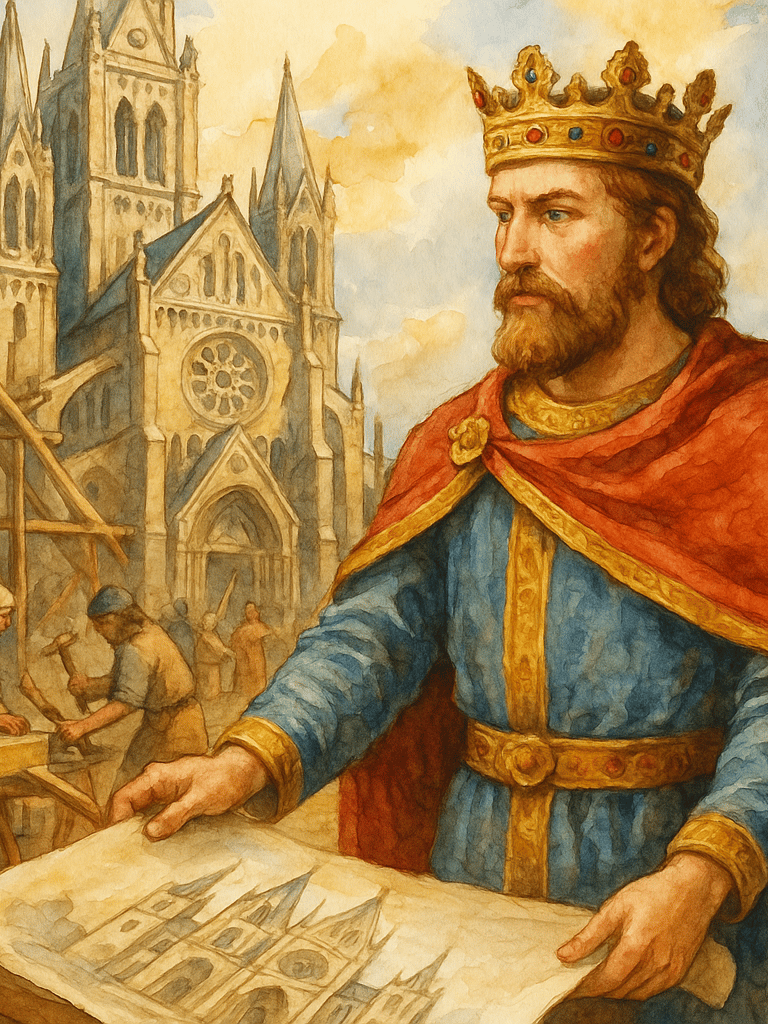Crowned for Christ: St. Henry II
The Holy Reign of the Only Canonized Emperor
Halo & Light Studios
7/12/20253 min read


Click Link for a reel of Daily Dose of Saints and Faithful Art:
https://youtube.com/shorts/gClTadF8zhE
When the first millennium gave way to the second, Europe was at a crossroads. The Roman Empire in the West had long collapsed. Viking raids shook the North. The Church—meant to be a beacon of light—was weakened by corruption, worldly interference, and spiritual neglect. Into this broken world stepped a most unlikely reformer: a crowned emperor who would become a saint.
St. Henry II (973–1024) was born into the powerful Ottonian dynasty, the ruling house of the Holy Roman Empire. From the start, his life was marked by a rare fusion of political training and spiritual formation. Raised under the guidance of St. Wolfgang of Regensburg, Henry was taught not only the art of governance but the discipline of prayer, the love of Scripture, and the humility of Christ.
In 1002, Henry became King of Germany, and in 1014, he was crowned Holy Roman Emperor by Pope Benedict VIII. At a time when emperors often clashed with the papacy, Henry chose a different path. He saw his authority not as absolute but as a sacred duty—to protect the Church, uphold justice, and lead his people to God.
By the 10th century, many monasteries had become entangled in politics, their spiritual life fading under feudal control. The Cluniac Reform, launched in 910 A.D. at Cluny Abbey in France, sought to restore purity to monastic life. It called for strict observance of the Rule of St. Benedict, freedom from lay interference, and a return to prayer-centered living.
St. Henry II became one of its most powerful allies. He endowed monasteries, defended their independence, and founded Bamberg Cathedral as a spiritual and intellectual center devoted to reform and renewal.
Henry's vision for leadership extended far beyond politics. He and his wife, St. Cunegonde, lived in a holy and celibate marriage—offering their union as a spiritual witness. Together, they modeled how Christian nobility could be lived with virtue, restraint, and charity. Henry governed with justice, cared for the poor, reformed clergy, and enacted laws in harmony with Gospel principles.
He understood that kingship without holiness breeds tyranny, but when united with virtue, it can become a force for sanctity and civilization.
According to the Catechism of the Catholic Church (CCC), leadership is not about domination, but service:
CCC 2235: “Those who exercise authority should do so as a service.”
Leadership must be grounded in the cardinal virtues: prudence, justice, fortitude, and temperance (CCC 1805–1809).
True authority seeks the common good and respects human dignity (CCC 1906–1912).
St. Henry lived this out. He did not lead to enrich himself or exalt his name—but to reflect the Kingship of Christ. His life reminds us that political power can be sanctified when placed at the service of the Gospel.
St. Henry died in 1024 and was canonized in 1146, becoming the only Holy Roman Emperor recognized as a saint. His feast day is July 13. His tomb rests in Bamberg Cathedral, the very church he founded for God’s glory.
“He governed as one who knew he must give an account to the King of kings.”
In an age thirsting for integrity, St. Henry II still speaks: leadership is not measured by might, but by moral courage, sacrificial love, and faith in Christ. He wore the imperial crown—but only to lay it at the feet of the true King.


